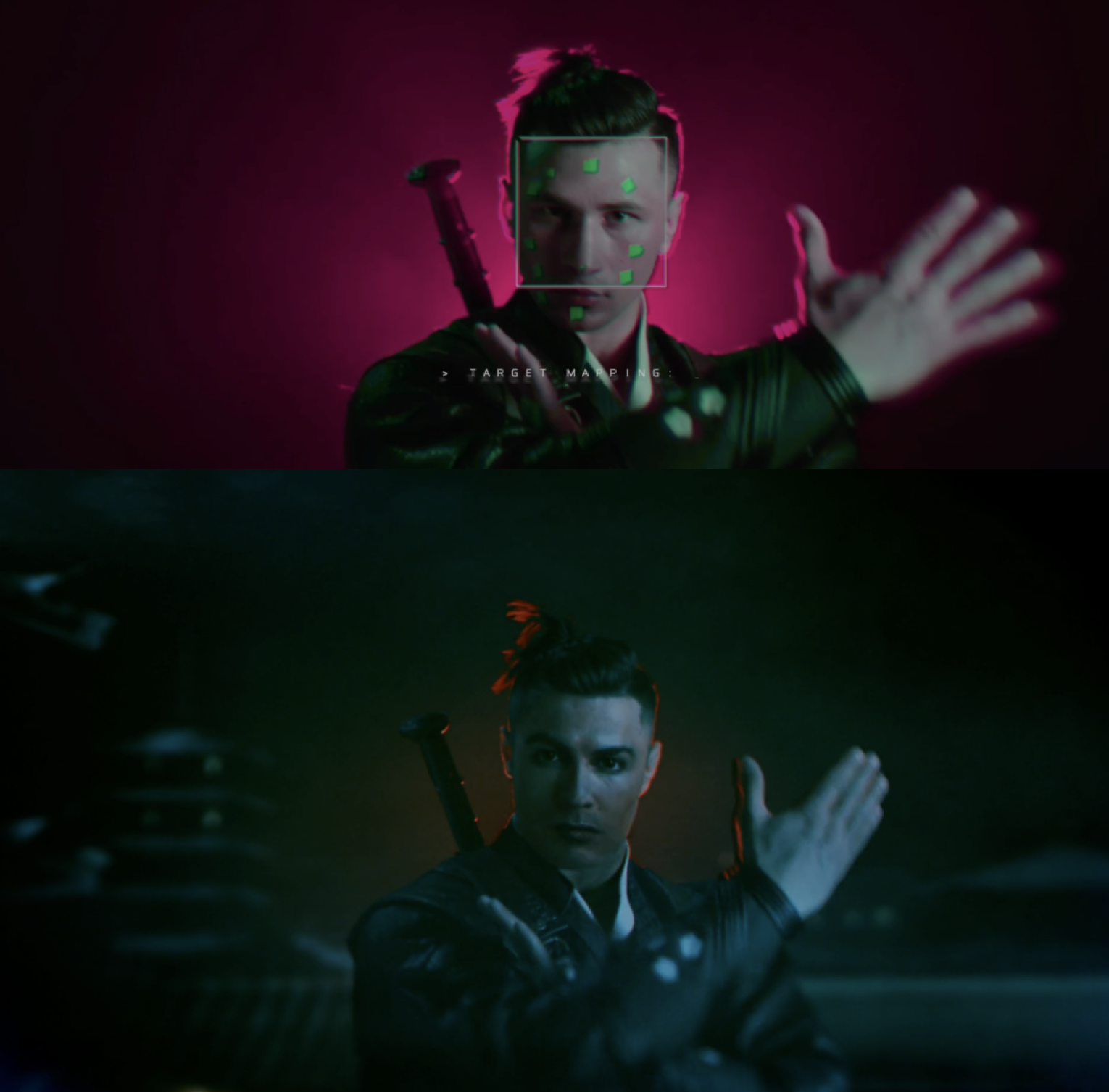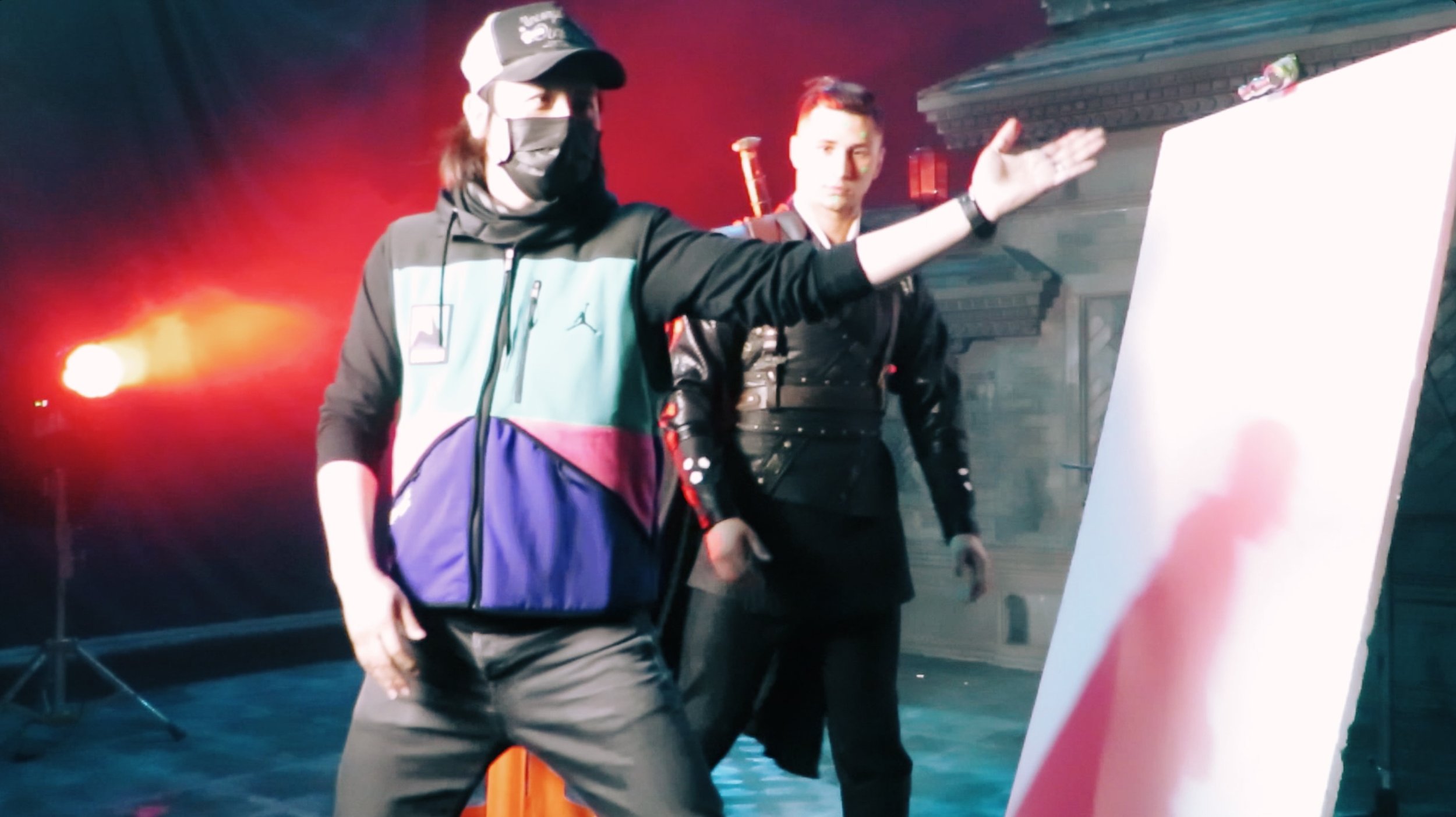Interviewed and Written by Tomás Pinheiro
How do you get one of the world’s most famous people, the biggest sporting star alive, the one and only Cristiano Ronaldo, into China for a one-day commercial shoot in the middle of a global pandemic?
You don’t—you deepfake his face.
That’s just what Canadian director Shawn Lowe did for ZujuGP, a football tech-media platform, in a commercial featuring Cristiano Ronaldo leaping over ancient Chinese rooftops in a thrilling Wushu martial arts sequence. Working with production house ID Creations, the stunt they pulled off is a first-of-its-kind, pioneering the use of artificial intelligence technology deepfake in commercial filmmaking in Asia, if not the world.
Considering the film’s need for intense post-production work, the choice of a director was a no-brainer. “I’m known in the industry as a bit of a tech nerd ‘slash’ director,” Lowe says, explaining that his roots are indeed in CGI and that he gained expertise in mastering innovative technology for filmmaking over the years. “Whatever tools are at my disposal to tell a good story, I believe in using them.”
Even for someone like Lowe, the stakes were high. The brief demanded that most of the background in the film be created with CGI, and the action scenes required intense fight choreography and high-flying wirework. The one-day shoot took place across four different sets in Shanghai, with roughly 30 stunt actors, including two for Cristiano Ronaldo, one for his body movements, and one for facial close-ups.
The biggest challenge was that, since the client couldn’t have the football star in China because of travel restrictions, they wanted to ensure that, whatever trick Lowe used, the result would be ultra-realistic.
Lowe argues that, no matter how fantastic CGI is for special effects, it is still not ideal for creating human faces. “The skin textures always look unnatural, and you constantly have to figure out a way to hide CGI imperfections in shadows, not to mention close-ups are extremely problematic,” Lowe says. He also reminds us that CGI is highly costly and time-consuming.
Deepfake, on the other hand, is a whole different ball game. “You can have the face brightly lit in any lighting circumstance, and it can come right up to the camera looking completely real. You can also do it much faster and with a smaller team and budget. It’s a total revolution,”Lowe says.
As Lowe explains, unlike the entirely artificial process of CGI, deepfake uses a person’s photographs and video footage to learn from them to create the optimal result on top of someone else’s face. Through the magic of deep learning, AI deepfake studies the intricacies of someone’s face and reproduces even the minor anatomic details that we humans cannot consciously perceive. “These are things you cannot spot,” Lowe says. “Most of the time, what looks realistic are the things that you cannot describe.”
For this spot, several different AI networks were used to create the deepfake. First, the computer studied Cristiano Ronaldo’s face at every angle and lighting scenario, and it did the same with the facial expressions of the stunt double. After coding the features of the faces, “it decodes and reconstructs one face over the other,” as Lowe puts it. “You also have two extra AI neural networks that combat each other,” he explains. “One is perfecting the image to look like Cristiano as much as possible; the other is trying to detect the flaws. As they fight each other, you end up with an increasingly realistic face over time.”
The entire process of learning Cristiano Ronaldo’s face took roughly one month to complete. Still, deepfake alone doesn’t do the trick. It only runs from a person’s forehead to the chin. For the other parts, like the shape of the head, the ears, the hair, and even the eyes, it needs to be combined with traditional CGI and compositing tools, a job done by post-production company Green Thumb in this project. This process stretches the time frame to two months, but even so, it’s still shorter and more affordable than using CGI exclusively.
Lowe thinks that deepfake technology is still in its infancy, but he firmly believes that significant improvements will be achieved in the next two or three years. When they come, they’ll affect filmmaking like nothing else before. “We’re opening a huge revolutionary box. Just think about it: celebrities don’t even need to arrive to shoot. They can just license their face and send over the data for us to make the commercial,” he says.
From that standpoint, deepfake is promising to solve the usual logistical issues when dealing with celebrities, such as their minimal availability and the hosting of their entire staff, always in first-class standards, which eats up the budget. It also helps with difficult shooting locations and close-ups during dangerous stunts.
“Currently, you shoot action scenes from far away and use editing to make the actor seem like he’s doing the performance, but not with deepfake; you’ll have a real shot, and it looks like the actor is right there, riding that motorcycle flying off from a volcano. And you won’t even be able to tell.” Lowe says.
To him, posthumous licensing is also on the horizon. “Just think of Keanu Reeves. He can license his face, and we can have Matrix one hundred, long after he’s gone,” he says. He also adds that de-aging actors, like what they did with Robert De Niro in The Irishman, might become more common.
When the production team was mulling over different creative ways to get Cristiano Ronaldo to take part realistically in the shoot, Lowe was the one to push for deepfake as a solution. “As far as I know, nobody had done it up to that point. I’m very proud of the entire team that worked on this spot and incredibly grateful to the clients at Mint Media for supporting us, believing in us, and having our backs with a brand new cutting edge technology,” he says.
Lowe is also grateful for Cristiano Ronaldo’s participation and support. The star’s social media sharing alone guaranteed over 10 million views in the first three days. By the end of the first week, the campaign had already reached 30 million views—even the making-off video had over 20 million views in a few days.
“I think there’s a meaning behind it,” Lowe says, explaining how he thinks their approach on this spot relates well with what Cristiano Ronaldo stands for. “He’s number one in football; the very cutting-edge. In a similar manner, we’re creating this film with cutting-edge technology. And I think his fans appreciate knowing how everything was made,” he says.
After the success of this campaign, Lowe is turning his attention back to Europe. Later this year, in France, he’ll start shooting his first feature film in partnership with director Ghislain Cabalou. To Livbegins shooting in Autumn 2022. “I can’t say much, but it’s a philosophical film, and it’ll touch people in a very humanistic way. Oh, and there’s also some Deepfake involved—we’ll be de-aging the actor,” he laughs.











